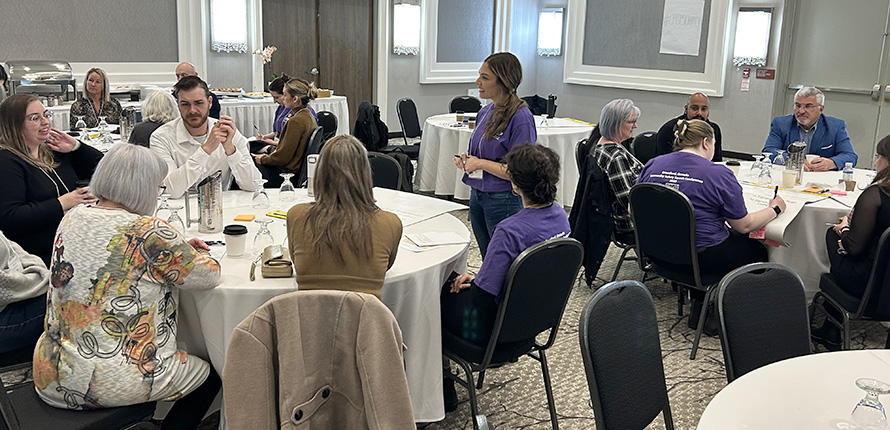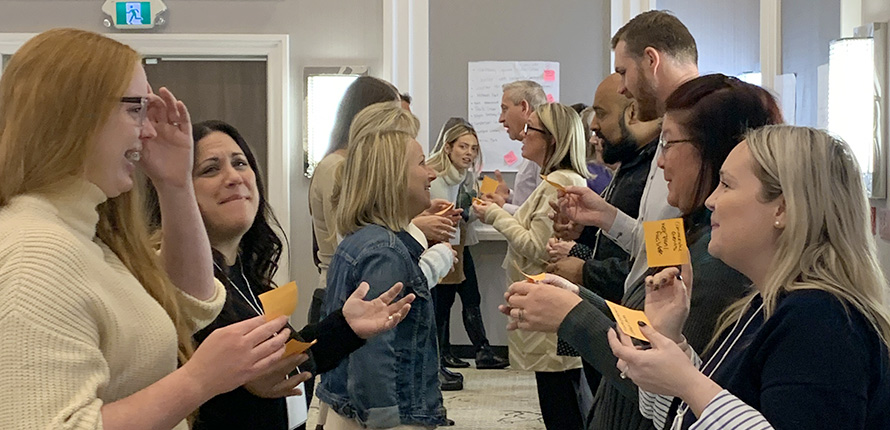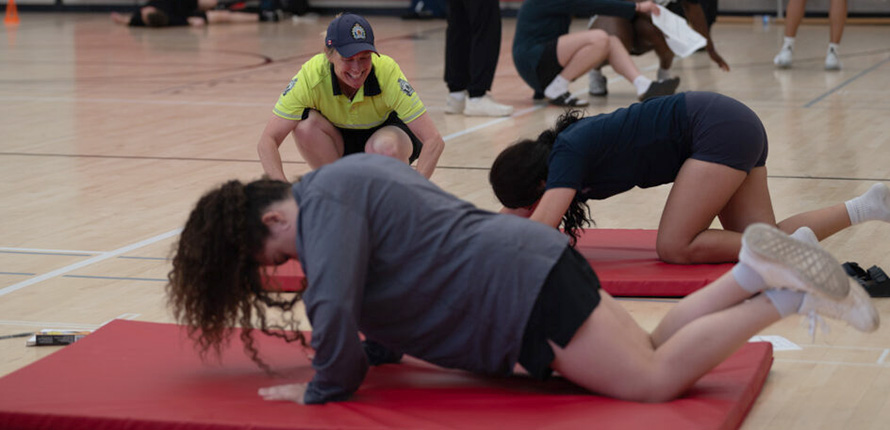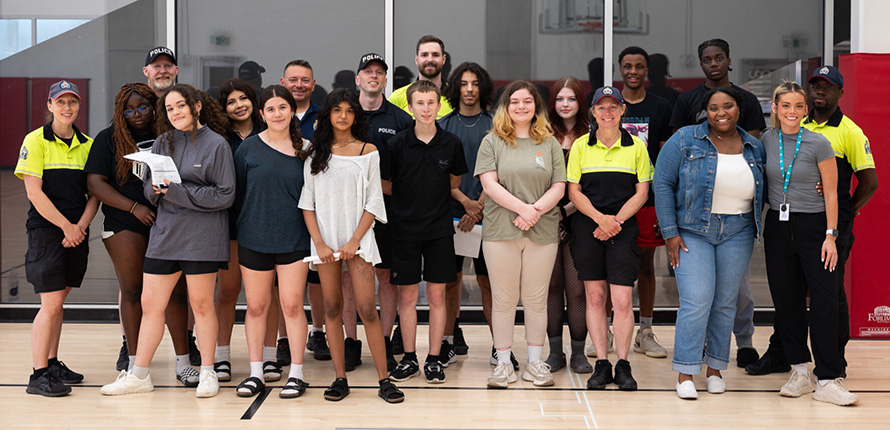We use cookies on this site to enhance your experience.
By selecting “Accept” and continuing to use this website, you consent to the use of cookies.
Search for academic programs, residence, tours and events and more.
July 10, 2024
Print | PDFWhile attending Wilfrid Laurier University’s Brantford Community Safety Search Conference in November 2023, Dave Wiedrick was struck by a statistic shared by Laurier researcher Tarah Hodgkinson. In her assessment of Brantford police activity, Hodgkinson found that 85 per cent of police calls were not related to crime. Most calls were reporting social disorder, such as mental health crises, largely made visible and exacerbated by homelessness.
Before joining the City of Brantford as director of bylaw compliance and security, Wiedrick spent many years working as a police officer. Hodgkinson’s data confirmed what he had long suspected: there must be a better way to address social disorder than by using valuable police resources, and perhaps helping people off the street was the first step. Wiedrick brainstormed ideas with community stakeholders at the conference, including social workers and downtown business owners, and left inspired to make a change.

Participants at the Brantford Community Safety Search Conference
Wiedrick regrouped with his colleagues in the City of Brantford Encampment Network, a group of municipal staff members and community outreach workers who support individuals in need of housing. They began devising a two-tiered response model with the Brantford Police Service.
“We are training police dispatchers so that when they get a call about an unhoused person, they will send housing and bylaw officers who can let the person know that, while they cannot stay in their encampment, we can help them and connect them with the social services they need,” says Wiedrick. “These calls don’t require a police response.”
This compassionate approach has improved the City of Brantford Encampment Network’s efforts, enabling it to quickly provide access to emergency shelters. Once sheltered, individuals are connected with staff to develop a personalized housing plan. Since July 2023, the team has helped more than 100 people find shelter.
“I often think of one young lady who was sleeping in the park,” recalls Wiedrick. “Our team was able to shelter her, put her in touch with Ontario Works, and within a matter of months she has returned to school, gotten a job and an apartment.”

Participants at the Brantford Community Safety Search Conference
Wiedrick attributes success stories like this one to “knocking down silos” and cross-function collaboration. He says Laurier’s Brantford Community Safety Search Conference “started the conversation.”
“It was eye-opening to learn about the research and meet with others in our community to hear what’s happening,” says Wiedrick. “We needed to get together and talk so we knew where to focus our attention. And now we’re seeing results. I have been to over a hundred conferences – this was one of my favourites.”
In addition to her research on police activity, Hodgkinson and her colleagues in Laurier’s Centre for Research on Security Practices (CRSP) – Carrie Sanders, Samantha Henderson and Camie Condon – invited Brantford community members on walking tours in 2022 and asked them to identify areas of the city that made them feel unsafe. They then mapped out those areas and cross-referenced them with crime data. It became clear that safety concerns were stemming less from serious, violent crimes and more from indicators of social unrest, such as homelessness and public drug use.
Knowing that these problems could be addressed by bringing local stakeholders together, the CRSP team organized the Brantford Community Safety Search Conference. As opposed to a typical conference where people passively listen to experts, a search conference brings local experts together to create and implement action plans. All members of the Brantford community were invited to attend.
As a crime prevention practitioner in cities around the world, Hodgkinson has learned to provide tactics and tools to community members and empower them to build solutions for themselves.
“It’s often assumed that decision-making has to happen through formal channels, but I find it’s most successful to just bring the right people to the table and help them make it happen,” says Hodgkinson, an assistant professor of Criminology.
Affordable housing was one of four priorities identified by conference attendees and Hodgkinson is thrilled to see the results from Wiedrick and his partners. Community events were another priority. Participants from the City of Brantford, YMCA of Hamilton Burlington Brantford and the Brantford Police Service envisioned a program that would help young people feel connected to their community and build positive relationships with police.
“We were in groups with like-minded people discussing how we can help make the community better and break down some of those walls between services,” says Megan Potvin, a youth in transition worker with the YMCA.

Youth Engagement Series (photo credit: Brant Beacon)
In April 2024, Potvin and her collaborators launched a six-week pilot of the Youth Engagement Series, adapted from an existing program at the Hamilton YMCA. Seventeen teenagers met weekly for two hours to play sports and engage in workshops about topics including healthy relationships and internet safety. Local police officers joined in on activities and presented about drugs, gangs and guns.
“I want young people to know that the police are safe and that they have trusted adults they can go to,” says Potvin. “They now know the resources available in their city and they know there’s a safe place for them to hang out. The biggest thing is giving them a positive sense of belonging in the City of Brantford.”

Youth Engagement Series (photo credit: Brant Beacon)
A second cohort of the Youth Engagement Series is already underway. Hodgkinson says these initiatives are exactly what she hoped to see when she posed the question to Brantford Community Safety Search Conference attendees, “What do we want Brantford to look like in five to 10 years?”
“As Laurier researchers, we work here and have relationships with so many partners in this area,” says Hodgkinson. “We want our research to be a catalyst for change because we’re invested in the well-being of the Brantford community.”